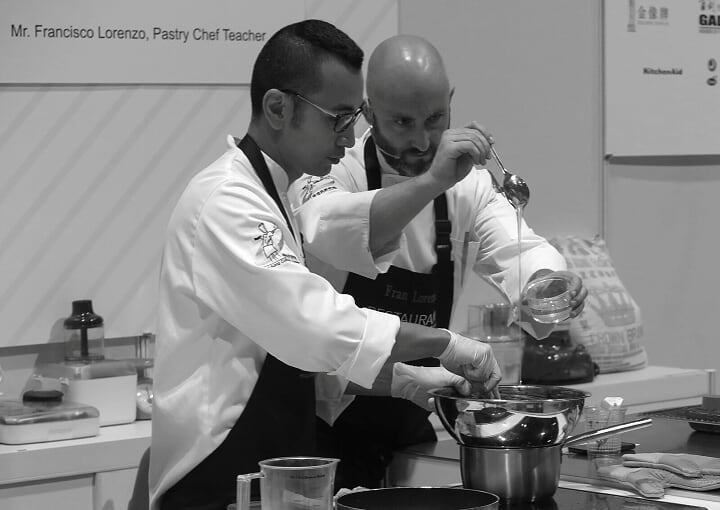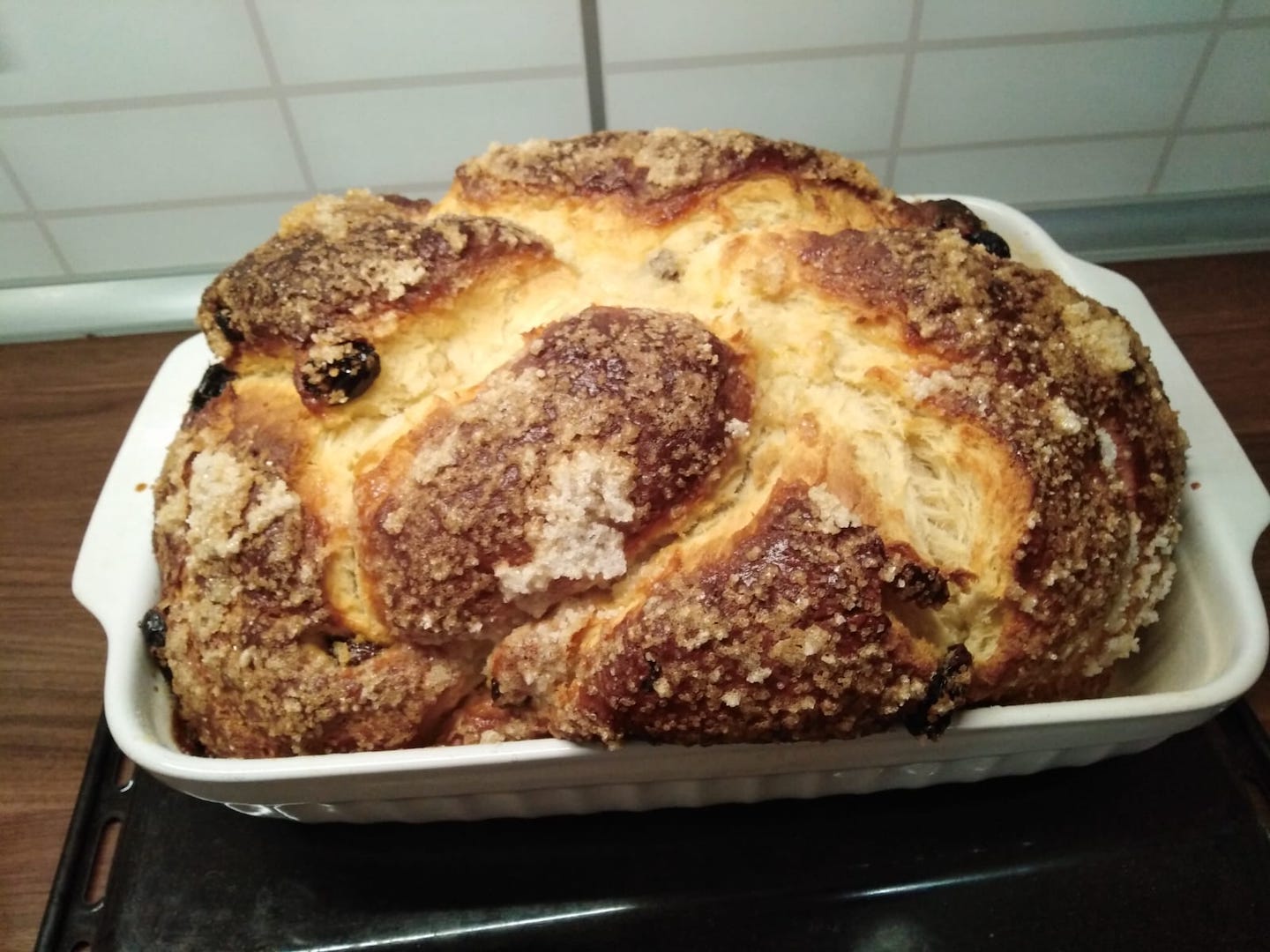 If he were to open a restaurant in Sofia, he’d call it Beautiful Sofia or Vitosha, after the nearby mountain. He is not a patriotic Sofian or a novelty-loving expat; Francisco Lorenzo is a Spanish chef with experience in Michelin-starred restaurants around the world who thinks local is the best way to go. A lecturer at the Sofia-based HRC Culinary Academy, Eastern Europe’s leading culinary institute, since last fall, he also thinks Bulgaria’s culinary revolution will hinge on serving authentic Bulgarian dishes to a world sated by generic menus with no personality.
If he were to open a restaurant in Sofia, he’d call it Beautiful Sofia or Vitosha, after the nearby mountain. He is not a patriotic Sofian or a novelty-loving expat; Francisco Lorenzo is a Spanish chef with experience in Michelin-starred restaurants around the world who thinks local is the best way to go. A lecturer at the Sofia-based HRC Culinary Academy, Eastern Europe’s leading culinary institute, since last fall, he also thinks Bulgaria’s culinary revolution will hinge on serving authentic Bulgarian dishes to a world sated by generic menus with no personality.
“Food needs to have roots, it needs to have personality,” says Francisco, who goes by Fran. A fifth-generation pastry maker, he should know about roots. “I didn’t choose cooking. Cooking has always been around me, ever since I can remember,” he says. His entire family is involved in the family pastry business in Grove, a small resort town on the Galician coast, and although he left his hometown nearly two decades ago, his culinary beginnings have had a huge influence on his work. The dessert he crafted for Bacchus magazine’s 2018 Restaurant of the Year Awards gala this spring was an exotic take on a traditional Spanish treat.
Fran still thinks his mother makes the best phyllo-dough pastries in the world, yet he likes experimenting with new flavors and ingredients and has picked up many a local dish along the way. Bulgarian recipes are slowly making it into his culinary repertoire as well. He makes a mean kozunak, Bulgarian challah bread. Shkembe chorba, tripe soup, drives him crazy. A recent dessert enjoyed by diners at Talents, the Academy’s training restaurant, featured a clear glaze infused with rakia, the Bulgarian grape brandy. The dessert’s name was—what else—Sofía, with the Spanish, accented “i.”
If he had to set up a restaurant anywhere else, he’d call it “Sugar, Salt, Pepper” because, he says, “sugar is fundamental to my life; salt because salting is very important in the gastronomy of my land; and life has to have a bit of spice.”
Before joining the team of HRC Culinary Academy, Chef Fran taught at Hong Kong Culinary Academy for two years. Sofia was his choice over San Francisco and Lisbon, from where he also had work offers. He has experience in classical French and Spanish, Mediterranean, and Asian cuisine and has done both niche fine dining and large-event catering. At university, he studied architecture and chemistry and has a master’s degree in gastronomy and culinary arts from San Jorge University in Spain.
In this interview for the ABF newsletter, Chef Fran talks about Bulgaria’s culinary potential, the importance of maintaining local traditions, and the secret to distinguishing yourself in the kitchen.
 You come from a long line of pastry chefs. Your mom and dad, your grandparents, and even your two sisters are involved in the family business. Did you choose the profession, or did it choose you?
You come from a long line of pastry chefs. Your mom and dad, your grandparents, and even your two sisters are involved in the family business. Did you choose the profession, or did it choose you?
Cooking has always been around me. I practically grew up in pastry workshops, where I was exposed to a range of smells and flavors. I still remember my grandfather’s pastry workshop, all the smells there. I try very hard to preserve and highlight the essence of that past. This is why I emphasize traditional, artisanal methods of working with food.
Even though you started with pastry, you have had a really varied career. Do you define yourself as a pastry chef or as a chef?
My foundation is in classic pastry, but I have worked as a corporate chef and a chef at luxury hotels in Europe, in the Caribbean, in Hong Kong, in mainland China. I’ve set up smaller places too. I have always been restless. Diversification is my goal, and I want to absorb as much knowledge as possible.
Because of my international experience, I get offers to do consulting work and corporate catering and work for luxury hotels, which is why I ended up doing general cooking as well. I am versatile in this regard. My beginnings are in pastry, but I am a chef too.
You joined HRC Culinary Academy last fall as a chef instructor, having turned down a couple of corporate offers. Why teaching?
I have always been interested in education, and I love giving classes. The two years that I taught in Asia was a great period. I wanted to continue in that vein, and that’s why I came here. It is really fulfilling to be around and pass your knowledge to people who want to learn. At least for me.
Here I teach classes at the Academy, and I also supervise students’ work at Talents, the training restaurant. Instruction at Talents is more hands-on, and at the Academy the approach is more theoretical. At Talents we design seasonal menus, and with time they get a little more complex as students gain in ability. I teach them to create recipes and solve real problems. For example, you do not always have the right ingredients, and you have to come up with an alternative.
Students learn to do everything at Talents. They prepare hot and cold dishes; they learn to do pastry. They rotate in all sections, and then they also have training in the dining room. You have to understand how a dining room works because the biggest problem in all restaurants is communication between the kitchen and dining room.
We also study from books, but I always tell students, “You get an important foundation with books, but then there are different paths that you can follow with that knowledge. You have to look for your path to cooking food and resolving situations.”
What kind of teacher are you? And what is the most important thing you hope to transmit to students?
I’m passionate, I’m supportive, and I’m tough when I have to be. I try to transmit my passion to students, because if you don’t have passion, you cannot stand out. Sometimes you have to be tough, but you have to be supportive and approachable as well. I try to pay extra attention to those who have less self-confidence in the kitchen, as I want to help them become more secure and catch up with the rest.
A solid foundation is really important. There are many roads to take once that foundation is there. If you don’t have a strong foundation in place and all you do is read off recipes, you will never learn to cook professionally. In this regard, I try to open students’ minds. Then each one has to find their own path, without paying too much attention to trends. They have to find their own niche, their own personality in the kitchen. And to do this, you have to live, you have to experiment, and you have to fail. Failure is good. I think it is fundamental. Success is relative. Success is setting up a business and running it well. It is about being professional and providing a service people can enjoy and respect. There are many different types of success.
Finally, people here tend to want to become chefs straight away and usually dismiss pastry, but in my classes, they end up taking a liking to crafting desserts, and this is something that gives me pride.
What does a culinary career give you?
You learn something new every day. In this respect, cooking really enriches you. It gives you a variety of experiences, it gives you life, in the broadest sense of the word: you get to know other cultures and people, you learn about others’ roots.
Being able to travel further enriches you as a chef because you can experience everyday cooking in different places. At the end of the day, doing it well is about getting to the roots of a cuisine. Traveling gives you a lot of perspective, as well as depth, when it comes to cooking, and you find connections between your cuisine and others. Traveling helps you learn to respect other cuisines, which can only make you a better cook. For me personally, having worked in places with a lot of social and economic inequality has helped me become more understanding and more respectful of others.
 So, how do you become a good chef?
So, how do you become a good chef?
Being a good chef is… cooking and having people enjoy your food. It’s that simple. You have to work hard and do things that you really enjoy. Being a good chef is not about following a recipe; it’s about having your own style, your own identity. And your identity should be authentically yours, not a good imitation of something others do.
Everyone is obsessed with fine dining today and want to become the next Ferran Adrià, Martín Berasategui, or Quique Dacosta [famous Spanish chefs, ed.], but the reality is that very few will get there. So, I always tell my students, “You can stand out if you do something with your country’s food, emphasize your own culinary heritage—that is, your country’s dishes, customs, and flavors.” Fusion food has become an obsession, particularly Asian fusion, and it is usually done badly.
I’d do cocido gallego or cocido madrileño (traditional stews from Galicia and Madrid respectively) and make them a centerpiece of my cooking. You can do the same in Bulgaria. Take a traditional dish, improve it if you want to, particularly if you have the knowledge to do it, but it should celebrate your cuisine. This is how these flavors will be preserved for future generations. I try to infuse my cooking with some of the flavors I experienced in my childhood, so I can preserve them. You should learn different techniques, of course, but if you don’t have that foundation, that tradition, if you don’t highlight your gastronomical roots, you will lose your personality.
Torrija [a moist base of milk-dipped brioche bread enveloped in a thin caramelized glaze] is a traditional Spanish dessert. Increasingly, it is becoming a staple in fine restaurants as well. The chef who elevated torrija to fine dining status was Martín Berasategui, the Spanish chef with the most Michelin stars. And torrija is something every grandma makes, just like every grandma makes banitsa here in Bulgaria.
How do you make your roots interesting to others?
You can start by opening your eyes to the fact that what you have here is good; it is no less than what others have. You have quality here, and your culture is just as good as any other. We all have something interesting to offer to other people. You just need to have your own identity; otherwise, you are just one of the crowd. Everyone wants to do French cuisine. And why don’t you do Bulgarian food, and do it well? I’d love to open a Michelin-starred restaurant here that does local food.
So, you’d try to impress the critics the way the chef rat did in the movie Ratatouille?
Yes, absolutely.
What interesting dishes have you tried in Bulgaria?
Not nearly enough. But Bulgarian soups are really good. I think tripe soup is delicious. There is a touch of genius in the way flavors combine there. Garlic is mandatory of course. This is the most authentic dish I have tried here. Meatball soup also has something about it, but my favorite is tripe soup. Salads here are great too. I enjoy rakia now even though I couldn’t stand the smell in the beginning.
If you had to present Bulgarian food to tourists, what would you serve them?
Vegetables are Bulgaria’s strength, and it would be really cool to serve a good vegetarian dish. A pisto [a Spanish vegetable stew] or a ratatouille [the French version of the pisto, made famous worldwide by the eponymous movie] made with Bulgarian vegetables would be incredible. You have amazing tomatoes and cucumbers (not in tarator though), and your peppers are wonderful too. Pork is important here, and you can make incredible things with Bulgarian pork. There is really good lamb as well. Bulgarian musaka is good too, but I wouldn’t make it as heavy. You can make organic food and can do fine dining with what you have here.
What local ingredients do you like cooking with?
Vegetables above all, leafy greens in particular. I spend a lot on vegetables, and it is worth it. I use meat, lamb and pork in particular. Of the poultry I like quail the most. I will use any product that comes from small local producers. That is, any product that is of local origin, the kind that comes from small farms in villages.
What fusion dishes would you create that draw on Bulgarian and Spanish culinary traditions?
You can make great stews here. And soup is a popular dish in both countries. Bulgaria has all the right ingredients for both. There is good pork, there is chicken, and you have good lamb too. Vegetables are excellent. Stuffed pepper is another dish you have in common with Spain, and you can make a good fusion dish of stuffed peppers.
Meatballs (albóndigas in Spain and kyuftes in Bulgaria) are good. It’s just that in Spain they are round, and here they are flatter. Lamb meatballs are a killer dish. I have made meatballs at fine restaurants. It’s a question of refining the dish a little. But you won’t get to that point unless you believe that meatballs could be a great dish, a dish that can be served at a fine establishment. Meatballs are considered cafeteria food, but you can adapt them for serving at a luxury place. Actually, I think a restaurant serving only meatballs would be a hit here in Sofia.
What does a chef do when he is not at work? Where do you eat?
The saying “The shoemaker’s son always goes barefoot” pretty much sums it up. I don’t cook for myself. At home I cook only if I have people over. And when I eat out, I go to normal places. I am not the fine diner type.
What would the last meal of your life consist of?
I’d go for a dish of lamprey [a fish-like vertebrate] and elvers [young eels], which I guess is pretentious. [Laughs] In the absence of that, I’d be happy with a simple dish of eggs, fried potatoes, and a chorizo, Spanish sausage [traditionally served for lunch or dinner in Spain]. A rich platter of desserts is a must of course, and my mother’s puff pastry cake is a mandatory item.

